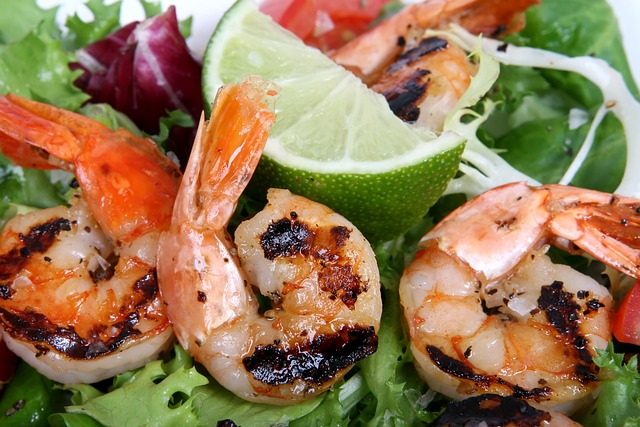Intermittent fasting has become a popular way of losing weight and improving overall health. It involves cycling between periods of eating and fasting, with the goal of restricting calorie intake and promoting fat burning. While there are many different ways to approach intermittent fasting, it is important to follow a healthy diet during the periods when you are not fasting. In this article, we will provide diet suggestions for intermittent fasting that are designed to help you achieve your goals while maintaining good health.
Section 1: What should the non-fasting period look like?
During the non-fasting period, it is important to consume a healthy and balanced diet that provides your body with the nutrients it needs. Here are some general guidelines to follow:
- Focus on whole, nutrient-dense foods: Choose foods that are rich in vitamins, minerals, fiber, and other important nutrients, such as fruits, vegetables, whole grains, lean proteins, and healthy fats.
- Limit processed and junk foods: Avoid highly processed and sugary foods, as well as fast food and junk food, which are typically high in calories and low in nutrients.
- Watch your portions: Even though you may have a smaller eating window during intermittent fasting, it is still important to pay attention to portion sizes and not overeat.
Section 2: How to space the meals?
The timing and frequency of your meals during the non-fasting period will depend on your personal preferences and schedule. However, here are some general guidelines to consider:
- Eat at regular intervals: Try to space your meals out evenly throughout the day, rather than eating a large meal all at once. This can help prevent overeating and promote better digestion.
- Consider your fasting schedule: If you are doing a daily 16/8 fasting schedule, for example, you may want to have your first meal at noon and your last meal before 8 pm.
- Don’t eat too close to bedtime: Eating late at night can disrupt your sleep and lead to indigestion, so try to finish your last meal at least 2-3 hours before bed.
Section 3:
Foods to include in your diet When following an intermittent fasting diet, it is important to include a variety of nutrient-dense foods that will help support your health and weight loss goals. Here are some foods to consider:
- Fruits and vegetables: These are rich in fiber, vitamins, minerals, and antioxidants, and can help keep you feeling full and satisfied.
- Whole grains: Whole grains, such as brown rice, quinoa, and whole-wheat bread, are rich in fiber and can help keep you feeling full.
- Lean proteins: Choose lean proteins, such as chicken, fish, tofu, and legumes, which can help support muscle growth and repair.
- Healthy fats: Include healthy fats, such as avocado, nuts, seeds, and olive oil, which can help promote satiety and support overall health.
Section 4:
Foods to avoid There are also some foods that you should avoid or limit when following an intermittent fasting diet, such as:
- Processed and junk foods: These are typically high in calories, sugar, and unhealthy fats, and can sabotage your weight loss goals.
- Sugary drinks: Sugary drinks, such as soda, juice, and sweetened coffee and tea, can contribute to weight gain and inflammation.
- Fried foods: Fried foods are often high in calories, unhealthy fats, and sodium, and can contribute to heart disease and other health problems.
Section 5: Sample meal plans
Here are five sample meal plans for an intermittent fasting diet, along with suggested times to eat each meal:
Meal Plan 1
- 12 pm: Spinach and feta omelet, whole-wheat toast, mixed berries
- 3 pm: Greek yogurt with honey and almonds
- 5 pm: Grilled chicken with roasted sweet potato and broccoli
- 8 pm: Mixed green salad with grilled salmon, avocado, and olive oil vinaigrette
Meal Plan 2
- 10 am: Protein smoothie with banana, peanut butter, and spinach
- 1 pm: Turkey wrap with whole-grain tortilla, avocado, and vegetables
- 4 pm: Apple slices with almond butter
- 7 pm: Baked salmon with quinoa and roasted vegetables
Meal Plan 3
- 1 pm: Chickpea and vegetable stir-fry with brown rice
- 4 pm: Greek yogurt with mixed berries and granola
- 7 pm: Grilled shrimp skewers with roasted sweet potato and asparagus

Meal Plan 4
- 12 pm: Grilled chicken Caesar salad with whole-grain croutons
- 3 pm: Carrot sticks with hummus
- 6 pm: Baked sweet potato topped with black beans, avocado, and salsa
- 8 pm: Boiled egg with Salsa
Meal Plan 5
- 11 am: Oatmeal with almond butter, banana, and cinnamon
- 2 pm: Tuna salad with mixed greens and whole-grain crackers
- 5 pm: Grilled chicken with roasted brussels sprouts and quinoa
- 8 pm: Greek yogurt with mixed berries and honey
Summary
Intermittent fasting can be an effective way to lose weight and improve overall health. However, it is important to follow a healthy and balanced diet during the non-fasting period, focusing on whole, nutrient-dense foods and avoiding processed and junk foods. By following these diet suggestions and sample meal plans, you can achieve your weight loss goals while supporting your overall health and well-being.
Images from Pixabay.com


Leave a Reply